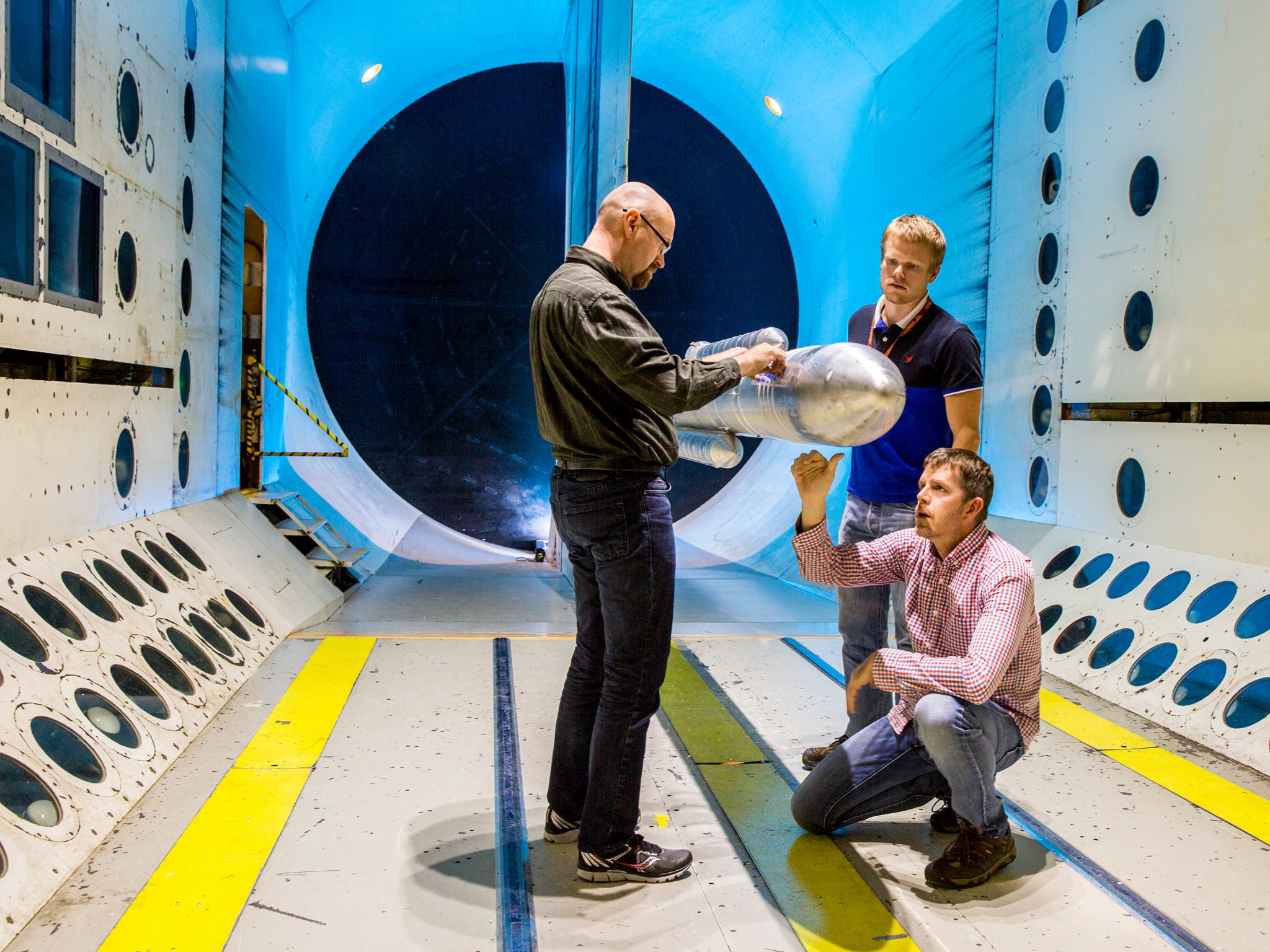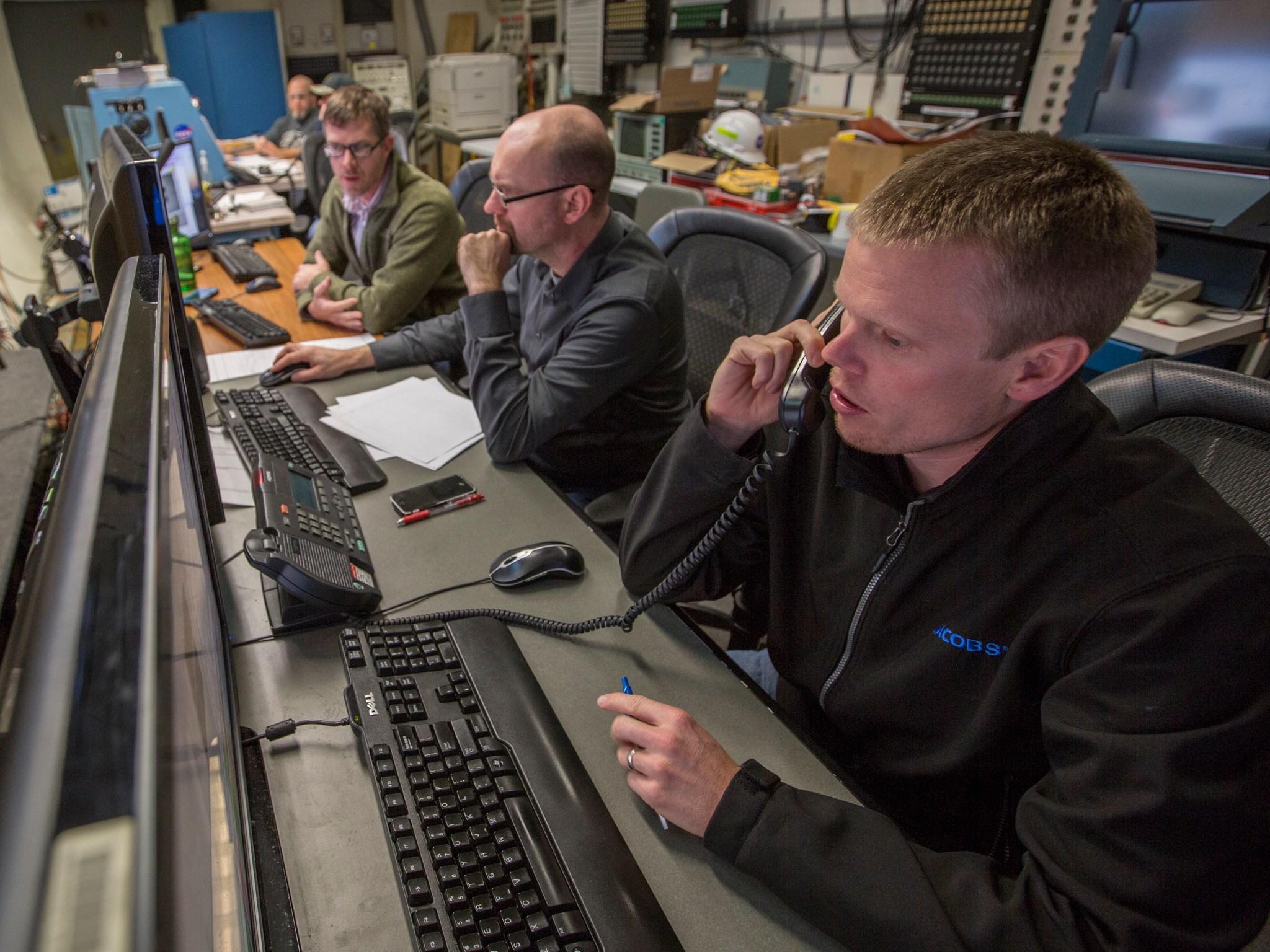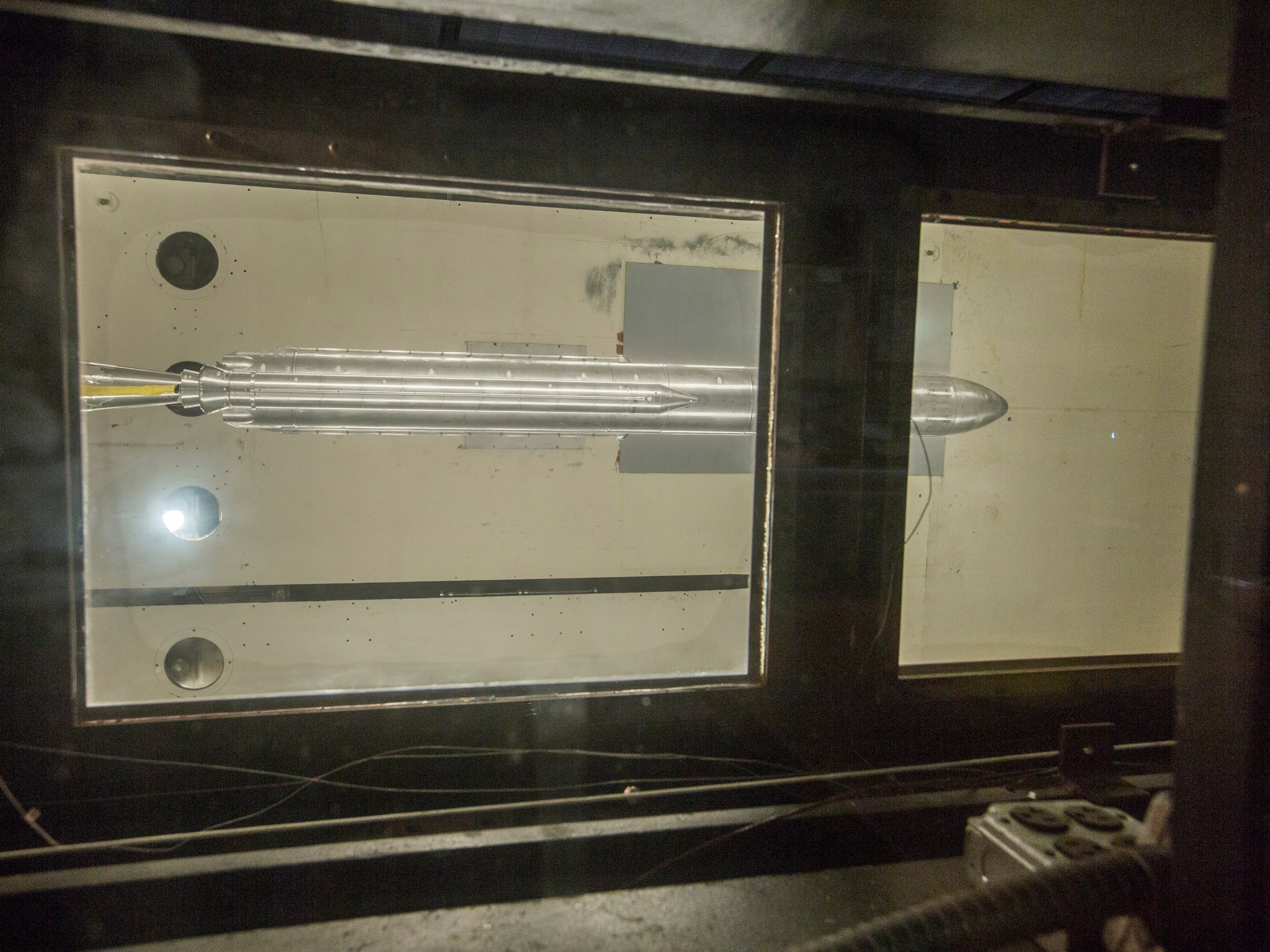Tucked away in Hampton, Virginia, is a 56-year-old NASA wind tunnel capable of generating winds speeds of up to 900 miles per hour.
In its lifetime, the Transonic Dynamics Tunnel has hosted hundreds of NASA projects, recently welcoming its latest guest, a 10-foot model of the world’s most powerful rocket, the Space Launch System (SLS).
SLS will send an Orion spacecraft to an asteroid and other deep space destinations on the Journey to Mars, and may also open new possibilities for robotic science missions to places like Saturn and Jupiter.
Engineers at NASA’s Langley Research Center in Virginia are testing the model to understand how the rocket may perform during deep-space missions. This test is particularly focused on understanding how the cargo version of the heavy-lift Block 1B SLS rocket, capable of lifting 105 metric tons, will behave at speeds just below supersonic.
“Just below supersonic is where shock waves begin to form on the vehicle and can dance and oscillate on the rocket,” explained Langley rocket scientist Dave Piatak. “The first step of these missions is safely getting above Earth’s atmosphere and into orbit.”
Cruising down rocket highway
Piatak compared the unsteady wind to a road trip.
Imagine traveling down the highway at about 70 mph on a perfect day. You put your hand out the window, feeling the pressure of wind upon your skin.
Move it behind the side view mirror and you’ll find spots that create an unsteady, oscillating flow of air that shakes, or buffets, your hand. At faster speeds, you may struggle to hold your hand still.
Rockets, like your hand, experience a similar type of buffeting except at speeds of up to 800 mph. Understanding how the rocket may behave when hit with unsteady wind and pressures is left up to the rocket scientists at NASA.
A team of Langley wind tunnel experts installed 446 miniature microphones on the SLS model to understand the rocket’s behavior in Earth’s thick lower atmosphere.
What happens to all that data?
“The data is recorded using high-speed data acquisition computers and ultimately used as input to a structural computer model of SLS to determine how aerodynamic unsteadiness shakes the rocket during flight,” Piatak said.
Understanding this shaking is important to the rocket’s structural strength and to the electronics that guide the rocket and its cargo on a safe flight to orbit
For Piatak, being a part of a grander mission makes his job worthwhile.
“I love coming in each day to work on these challenging problems,” Piatak said proudly. “It helps when you are shoulder-to-shoulder with a tremendous and diverse NASA team here at Langley and from across our great country.”
This is just the beginning for Langley SLS wind tunnel tests. Throughout the next year different versions and configurations of the rocket will undergo unique testing at NASA facilities.




























